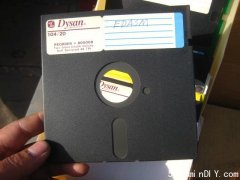加拿大华人论坛 美国华人新闻The Top Ten Web Design Mistakes of 1999
在加拿大
The "top ten" design mistakes I identified in 1996 are still bad for Web usability and are still found on many websites. So in that sense, not much has changed over the last three years.But unfortunately new Web technology and new applications for the Web have introduced an entirely new class of mistakes. Here are the ten worst.1. Breaking or Slowing Down the Back ButtonThe Back button is the lifeline of the Web user and the second-most used navigation feature (after following hypertext links). Users happily know that they can try anything on the Web and always be saved by a click or two on Back to return them to familiar territory.Except, of course, for those sites that break Back by committing one of these design sins: * opening a new browser window (see mistake #2) * using an immediate redirect: every time the user clicks Back, the browser returns to a page that bounces the user forward to the undesired location * prevents caching such that the Back navigation requires a fresh trip to the server; all hypertext navigation should be sub-second and this goes double for backtracking 2. Opening New Browser WindowsOpening up new browser windows is like a vacuum cleaner sales person who starts a visit by emptying an ash tray on the customer's carpet. Don't pollute my screen with any more windows, thanks (particularly since current operating systems have miserable window management). If I want a new window, I will open it myself!Designers open new browser windows on the theory that it keeps users on their site. But even disregarding the user-hostile message implied in taking over the user's machine, the strategy is self-defeating since it disables the Back button which is the normal way users return to previous sites. Users often don't notice that a new window has opened, especially if they are using a small monitor where the windows are maximized to fill up the screen. So a user who tries to return to the origin will be confused by a grayed out Back button.(See also special guidelines for opening PDF files in new windows.)3. Non-Standard Use of GUI WidgetsConsistency is one of the most powerful usability principles: when things always behave the same, users don't have to worry about what will happen. Instead, they know what will happen based on earlier experience. Every time you release an apple over Sir Isaac Newton, it will drop on his head. That's good.The more users' expectations prove right, the more they will feel in control of the system and the more they will like it. And the more the system breaks users' expectations, the more they will feel insecure. Oops, maybe if I let go of this apple, it will turn into a tomato and jump a mile into the sky.Interaction consistency is an additional reason it's wrong to open new browser windows: the standard result of clicking a link is that the destination page replaces the origination page in the same browser window. Anything else is a violation of the users' expectations and makes them feel insecure in their mastery of the Web.Currently, the worst consistency violations on the Web are found in the use of GUI widgets such as radio buttons and checkboxes. The appropriate behavior of these design elements is defined in the Windows Vista User Experience standard, the Macintosh human interface standard, and the Java UI standard. Which of these standards to follow depends on the platform used by the majority of your users (good bet: Windows), but it hardly matters for the most basic widgets since all the standards have close-to-identical rules.For example, the rules for radio buttons state that they are used to select one among a set of options but that the choice of options does not take effect until the user has confirmed the choice by clicking an OK button. Unfortunately, I have seen many websites where radio buttons are used as action buttons that have an immediate result when clicked. Such wanton deviations from accepted interface standards make the Web harder to use.(See also: Non-standard GUI controls were one of the biggest usability problems identified in our usability testing of 46 Web-based applications in Flash. For updated info, see our full-day seminar on Application Usability 1: Page-Level Building Blocks for Feature Design)4. Lack of BiographiesMy first Web studies in 1994 showed that users want to know the people behind information on the Web. In particular, biographies and photographs of the authors help make the Web a less impersonal place and increase trust. Personality and point-of-view often wins over anonymous bits coming over the wire.Yet many sites still don't use columnists and avoid by-lines on their articles. Even sites with by-lines often forget the link to the author's biography and a way for the user to find other articles by the same author.It is particularly bad when a by-line is made into a mailto: link instead of a link to the author's biography. Two reasons: * it is much more common for a reader to want to know more about an author (including finding the writer's other articles) than it is for the reader to want to contact the author - sure, contact info is often a good part of the biography, but it should not be the primary or only piece of data about the author * it breaks the conventions of the Web when clicking on blue underlined text spawns an email message instead of activating a hypertext link to a new page; such inconsistency reduces usability by making the Web less predictable 5. Lack of ArchivesOld information is often good information and can be useful to readers. Even when new information is more valuable than old information, there is almost always some value to the old stuff, and it is very cheap to keep it online. I estimate that having archives may add about 10% to the cost of running a site but increase its usefulness by about 50%.Archives are also necessary as the only way to eliminate linkrot and thus encourage other sites to link to you.6. Moving Pages to New URLsAnytime a page moves, you break any incoming links from other sites. Why hurt the people who send you free customer referrals?7. Headlines That Make No Sense Out of ContextHeadlines and other microcontent must be written very differently for the Web than for old media: they are actionable items that serve as UI elements and should help users navigate.Headlines are often removed from the context of the full page and used in tables of content (e.g., home pages or category pages) and in search engine results. In either case the writing needs to be very plain and meet two goals: * tell users what's at the other end of the link with no guesswork required * protect users from following the link if they would not be interested in the destination page (so no teasers - they may work once or twice to drive up traffic, but in the long run they will make users abandon the site and reduce its credibility) 8. Jumping at the Latest Internet BuzzwordThe web is awash in money and people who proclaim to have found the way to salvation for all the sites that continue to lose money.Push, community, chat, free email, 3D sitemaps, auctions - you know the drill.But there is no magic bullet. Most Internet buzzwords have some substance and might bring small benefits to those few websites that can use them appropriately. Most of the time, most websites will be hurt by implementing the latest buzzword. The opportunity cost is high from focusing attention on a fad instead of spending the time, money, and management bandwidth on improving basic customer service and usability.There will be a new buzzword next month. Count on it. But don't jump at it just because Jupiter writes a report about it.9. Slow Server Response TimesSlow response times are the worst offender against Web usability: in my survey of the original "top-ten" mistakes, major sites had a truly horrifying 84% violation score with respect to the response time rule.Bloated graphic design was the original offender in the response time area. Some sites still have too many graphics or too big graphics; or they use applets where plain or Dynamic HTML would have done the trick. So I am not giving up my crusade to minimize download times.The growth in web-based applications, e-commerce, and personalization often means that each page view must be computed on the fly. As a result, the experienced delay in loading the page is determined not simply by the download delay (bad as it is) but also by the server performance. Sometimes building a page also involves connections to back-end mainframes or database servers, slowing down the process even further.Users don't care why response times are slow. All they know is that the site doesn't offer good service: slow response times often translate directly into a reduced level of trust and they always cause a loss of traffic as users take their business elsewhere. So invest in a fast server and get a performance expert to review your system architecture and code quality to optimize response times.10. Anything That Looks Like AdvertisingSelective attention is very powerful, and Web users have learned to stop paying attention to any ads that get in the way of their goal-driven navigation. That's why click-through rates are being cut in half every year and why Web advertisements don't work.Unfortunately, users also ignore legitimate design elements that look like prevalent forms of advertising. After all, when you ignore something, you don't study it in detail to find out what it is.Therefore, it is best to avoid any designs that look like advertisements. The exact implications of this guideline will vary with new forms of ads; currently follow these rules: * banner blindness means that users never fixate their eyes on anything that looks like a banner ad due to shape or position on the page * animation avoidance makes users ignore areas with blinking or flashing text or other aggressive animations * pop-up purges mean that users close pop-up windoids before they have even fully rendered; sometimes with great viciousness (a sort of getting-back-at-GeoCities triumph). I don't want to ban pop-ups completely since they can sometimes be a productive part of an interface, but I advise making sure that there is an alternative way of using the site for users who never see the pop-ups. Source:http://www.useit.com/alertbox/990530.html
·加拿大新闻 Aspark发布炫酷电动敞篷跑车Owl
·加拿大新闻 宝马新iX3900km续航+Momenta辅驾
·加拿大新闻 尹大卫:如果维持油轮禁令不反对再建一条输油管
·加拿大新闻 [有片] 温哥华白帽晋身MLS总决赛下周六梅拿斗美斯争冠军
·加拿大新闻 别忘了!加拿大3项"集体索赔"即将到期:抓紧最后
·中文新闻 布里斯班挡土墙倒塌,一名男子死亡,另一人重伤
·中文新闻 据传,这对迷人的房地产权势夫妇在加州举行了众星云集的婚礼








